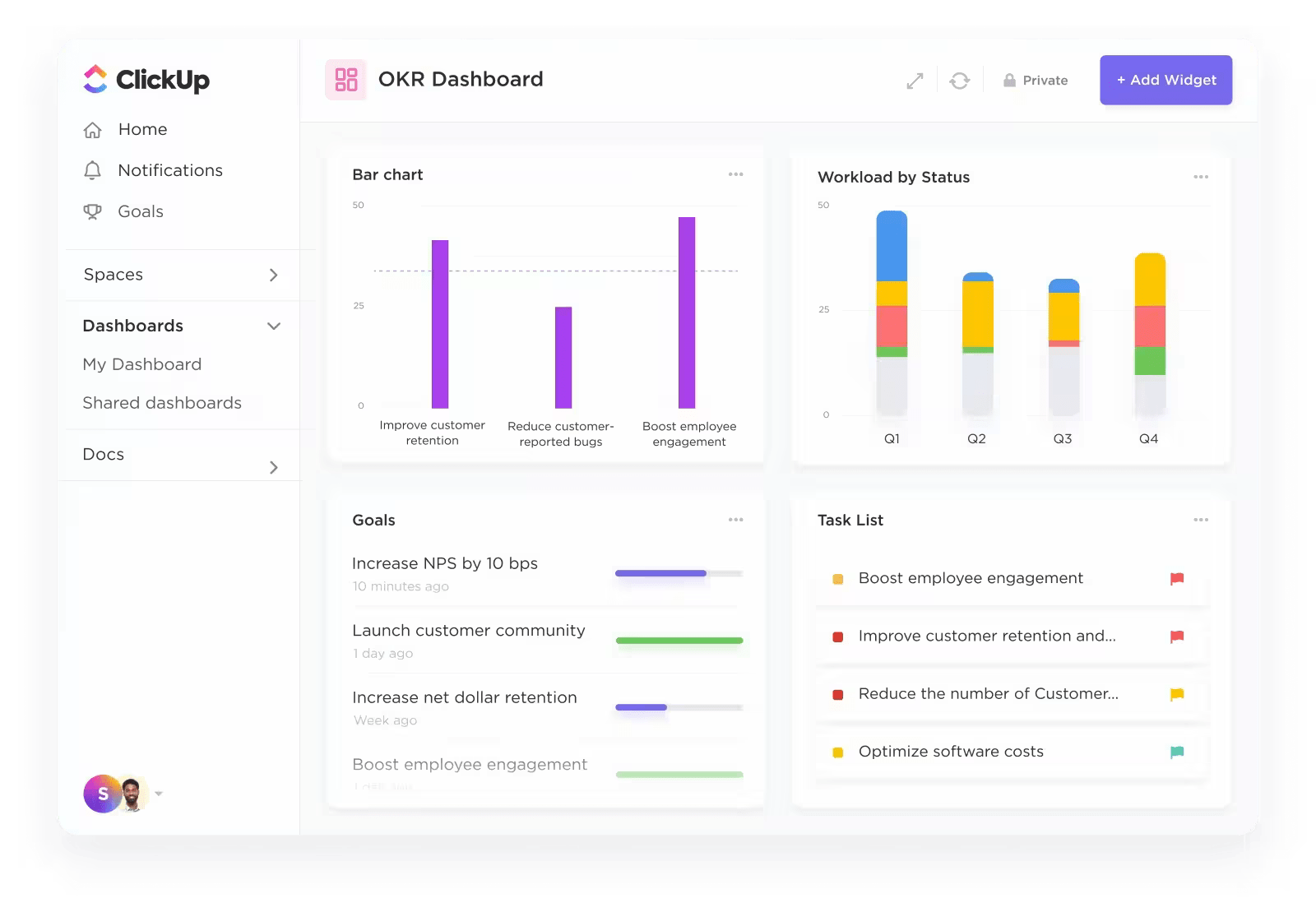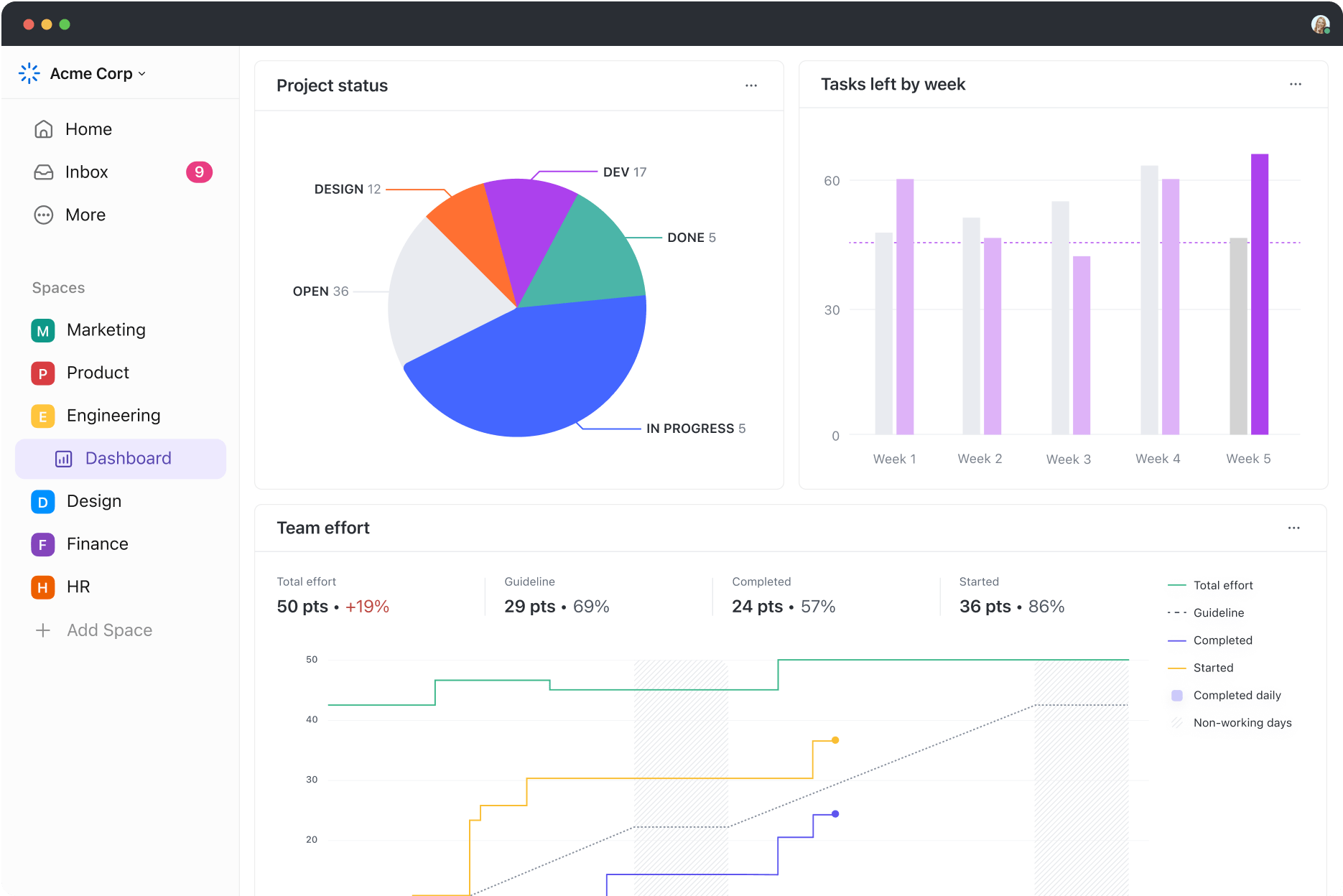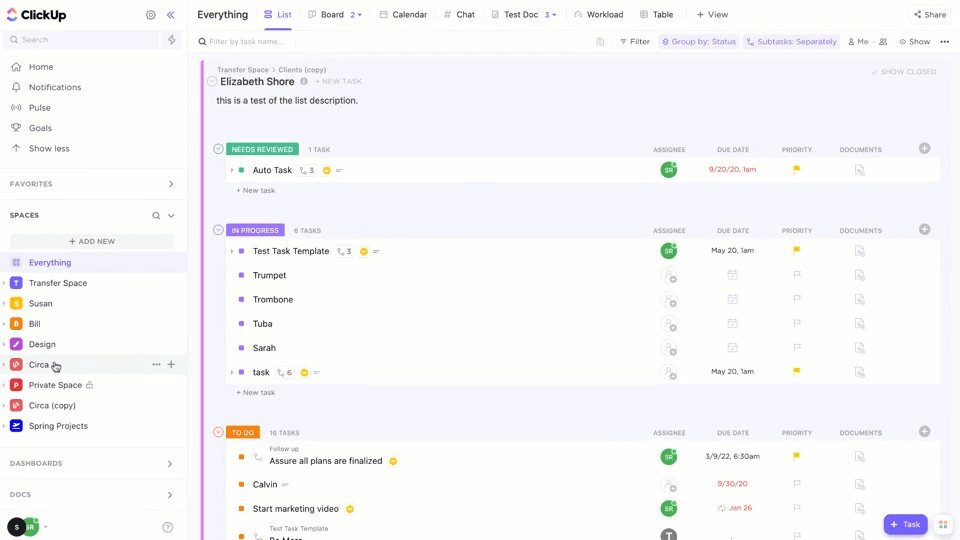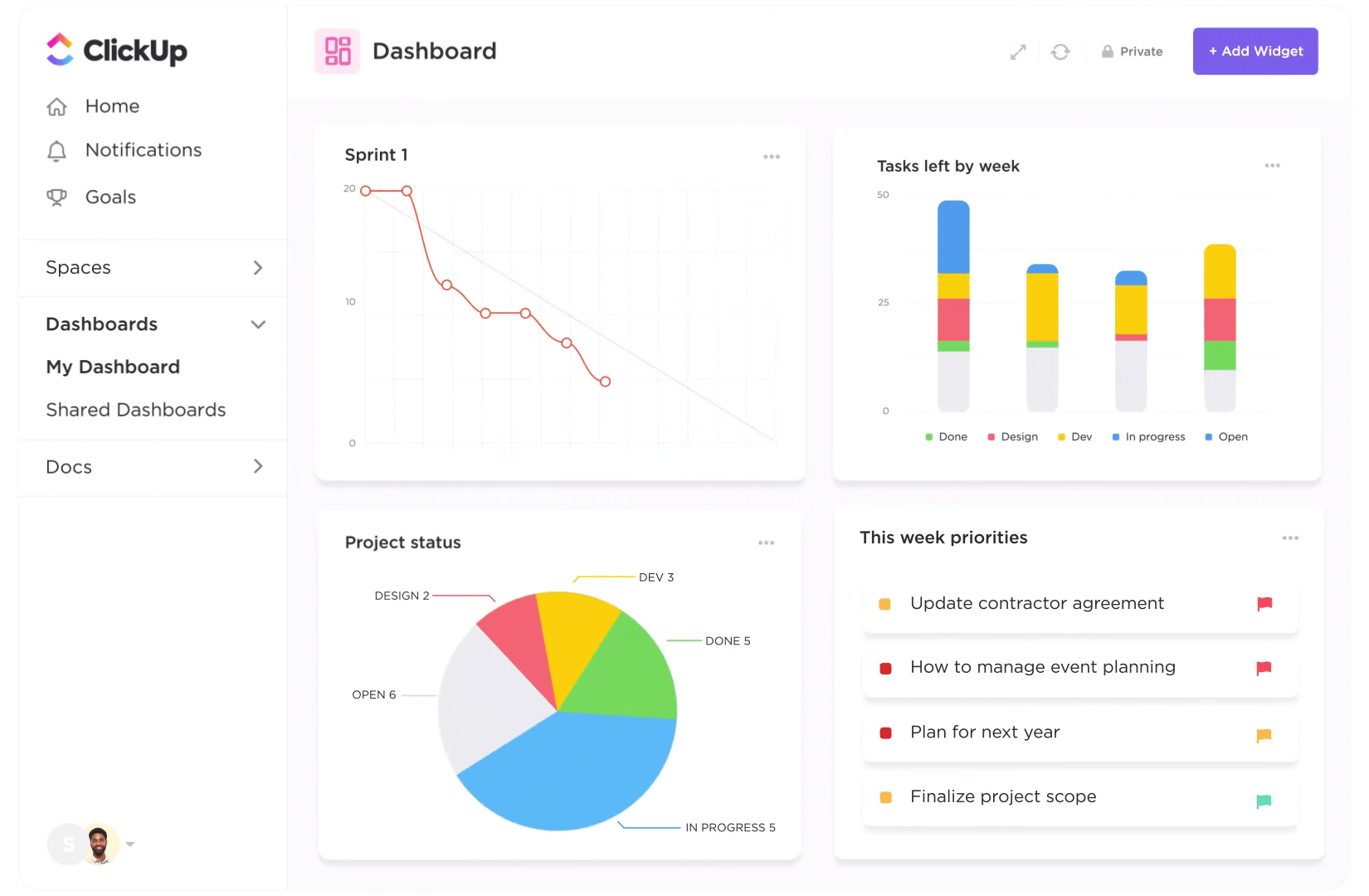Top Project Management Trends to Watch Out for in 2025

Sorry, there were no results found for “”
Sorry, there were no results found for “”
Sorry, there were no results found for “”
According to the Project Management Institute (PMI), the total GDP of project-focused industries is expected to rise to $34.5 trillion by 2030.
Project management, as we used to know it, has changed dramatically. Remote work, tech advancements, and AI are transforming project management.
We are shifting from traditional, centralized project management to a more collaborative, data-driven, and automated approach.
Other project management trends taking center stage are employee wellness for higher productivity, hybrid project management methodologies for flexibility, AI project management revolving around automation and increasing efficiency, and focusing on soft skills.
This guide will discuss the changing trends shaping the work of project managers. Dive in to understand how to meet your goals as a project manager. 🎯
Remember when you had to deal with repetitive tasks like data collection and creating project reports? AI is here to save you the time and effort it took to do these tasks.
According to Gartner, Artificial Intelligence will replace 80% of project management tasks by 2030.
AI will eventually automate all routine tasks, even complex ones, allowing project managers to focus on higher-level strategic thinking, complex problem-solving, and stakeholder management.
With the help of AI’s capabilities, you can skip these mundane steps in your project management journey, enabling you to become a more efficient and effective project manager.
Think of your core activities as a project manager:
AI tools will be part of your project management activities, from data analysis to creating project reports.
AI tools will also help you identify and manage project risk to avoid failure by providing valuable insights and support during reviews and monitoring.
Now, you can use AI for more complex tasks like automating project execution and handling costs and duration. Let’s look at one of the leading AI tools to help you with numerous aspects of project management.
Want to start using AI in your everyday project management software? Fast-track project management with ClickUp Brain. It helps you accelerate and execute project planning with automated project management.
With ClickUp Brain, you can access quick and accurate answers derived from the context of any task or project within your ClickUp workspace. This eliminates asking team members for specific project details already available in ClickUp.

This means no more manual tasks. You’ll get accurate AI updates and status reports for tasks, documents, and team members—eliminating the need for repetitive work.
On top of that, you can automatically create subtasks aligned with descriptions and handle tasks like writing updates on your own and summarizing content threads swiftly.
ClickUp automation is the perfect way to explore the benefits of AI in project management. You’ll gain valuable free time for other project management tasks.
Takeaway: AI and automation simplify routine project management tasks, freeing project managers to focus on strategic thinking, problem-solving, and relationship building.
Resource management involves effectively and efficiently utilizing a company’s resources in a project. These resources include financial assets, human capital, and information technology.
Intelligent and timely resource allocation is crucial for achieving optimal project outcomes.
Companies must manage their available resources more efficiently, given the likelihood that economic downturns, global challenges, and escalating international tensions will affect the availability of resources to initiate and complete projects.
41% of resource managers face challenges and need help gaining insights into available resources or dealing with insufficient funds.
They cannot afford budget overruns, overhiring, or making the wrong investments. Hence, companies are putting in place measures to ensure that each resource is used correctly. Some changes in this space include:
ClickUp helps you manage resources, handling all your resource needs in one place. Use features like asset management, time tracking, and digital forms to make your work effective and efficient and meet project needs.
Here are some standout features of ClickUp’s resource management software:

Takeaway: Effective resource management is becoming a critical success factor, as project managers must strategically optimize diverse resources and proactively forecast needs within a dynamic environment.
The shift towards remote and hybrid work models has redefined the workplace. Recent data from Buffer’s annual State of Remote Work Report highlights that 60% of remote workers in 2023 preferred remote work, marking a 3% increase from the previous year.
This trend has significantly affected how projects are managed in today’s environment.
Employees no longer need to run across office desks to get work done. They can instead work from anywhere in the world and collaborate over the Internet.
Remote work allows employees to work anywhere, boosting morale and positive performance.
However, it also brings in some challenges:
However, project managers can successfully deliver projects in remote and hybrid settings by:
ClickUp Project Management offers remote and flexible work features, enabling collaboration even when your team is geographically far apart.
Some distinct features of ClickUp to manage remote workers include:

Takeaway: The rise of remote and hybrid work requires project managers to adapt by prioritizing communication, leveraging collaboration tools like ClickUp, building a virtual team culture, and addressing cybersecurity concerns.
In 2024, Agile methodologies such as Scrum and Kanban will provide the flexibility to respond quickly to changes, allowing teams to adjust priorities and deliver value incrementally.
This is vital to project management. Agile also allows adaptive planning, continuously refining plans based on real-time feedback and evolving priorities.
Agile is about being flexible, constantly improving, and working together as a super-powered team. Instead of one giant project with a far-off finish line, agile breaks things down into smaller chunks called ‘sprints.’
For example, combining the Agile and Waterfall models allows you to collect all the details you need while staying flexible enough to accommodate any changes.
This approach merges the advantages of both methodologies, enabling switches and adjustments after short sprints.
ClickUp Dashboards and ClickUp’s hybrid project management approach cover everything, from building centralized knowledge bases to embracing Agile workflows.

ClickUp Whiteboards and ClickUp Docs contribute to improved hybrid project management by providing tools for collaborative visual planning and documentation.
Takeaway: Agile project management empowers teams to deliver projects with greater adaptability, customer focus, and efficiency through iterative sprints and flexible frameworks.
Employee emotional stability directly correlates with maximized productivity. Happy workers are 20% more productive! This is why modern businesses prioritize empathy and emotional intelligence to communicate goals, expectations, and feedback effectively.
Soft skills and emotional intelligence are crucial for a global workforce with distinct cultures and backgrounds. They are essential for avoiding conflicts and helping with teamwork.
The ClickUp Emotional Intelligence Action Plan template is a powerful tool for developing emotional intelligence skills.
It helps create a strategy for enhancing self-awareness and supporting emotions, effectively managing emotional intelligence while achieving project goals.
Takeaway: Project success increasingly relies on emotional intelligence and soft skills, strong relationships, positive work culture, and adaptability in an AI-driven future.
The multitude of tasks, employees, and emails project managers need to manage can be overwhelming. To succeed, they are using sophisticated project management tools like ClickUp, which harness the power of AI and offer several benefits from their use, such as:
Project management tools and solutions like ClickUp work as your assistant, streamlining project management in ways you never knew were possible.
ClickUp has advanced project management tools equipped with all-in-one knowledge and work management:

ClickUp promotes process standardization to settle all your worries and equip you with the best project management tools and practices for your projects.
Takeaway: Advanced project management tools like ClickUp streamline processes, optimize resources, reduce risks, and help project managers achieve greater efficiency and success.
Even with meticulous planning, unexpected delays and obstacles can arise, necessitating initial timelines, budgets, and resource allocation adjustments.
Change management has emerged as a prominent trend dominating project management in 2024.
This is attributed mainly to the increased unpredictability of various factors, ranging from talent retention to global economies. Furthermore, change management encompasses human and cultural aspects, including communication and collaboration barriers, resignations, and other challenges.
A strategic approach to change management can go a long way, but mastering the skill of identifying the right time to incorporate and implement it is invaluable.
Addressing changing requirements is essential to stay ahead of the market and overcome project management challenges.
Let us understand the integral steps in effective change management in an ongoing project:
Are you worried about managing all these changes at once? Worry not.
ClickUp will be with you every step of the way and assist in change management. Its easily adaptable features, ready-to-use customizable folders, and change management templates help monitor the changes thoroughly.

ClickUp is highly customizable, allowing you to tailor the platform to your workflow and needs Configure custom fields, statuses, and workflows to match how teams work.
Takeaway: Effective change management is critical for project success. It ensures adaptability to shifting requirements, smooth transitions, and sustained team buy-in.
Project managers are now using data to make more informed decisions about what works and what doesn’t. Additionally, collecting and analyzing data has become much easier with the help of AI.
Data provides a comprehensive understanding of your clients, including their locations and the resources required to serve them.
It also offers insights into the internal workings of your organization, such as employee performance and project details.
Project management tools like ClickUp help you understand the data demands of your project and set up initiatives to collect and analyze relevant data.
The analytics report template by ClickUp:
ClickUp Reporting has custom statuses, views, and fields to provide an all-around solution for analyzing your project data.

Takeaway: Data analytics gives project managers the insights to optimize resource allocation, predict outcomes, and make informed decisions that drive project success rates.
Organizations can reap significant project management benefits by embracing current trends and integrating AI-powered support and remote work flexibility.
These strategies motivate employees and enhance productivity, providing a competitive edge in their industries.
Discover ClickUp, your ultimate project management solution. It seamlessly integrates project management, knowledge sharing, and collaboration tools into a single platform.
Empower your team to stay ahead of evolving project management trends without losing a beat.
Join ClickUp for free and experience the future of project management.
The major trends in project management are the integration of AI, resource management, change management, and flexible working.
The major trends in project management in 2024 include hybrid project management, data analytics, advanced project management tools, AI integration, hybrid work culture, and emotional intelligence.
The term ‘trend’ refers to the most recent changes and directions in project management initiatives. Staying informed about the latest trends is essential for staying competitive and maximizing project success.
© 2025 ClickUp